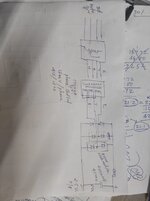ACHU9539
Newbie

I Need a DC source 10kw power and 2.5 kv output voltage .I have a transformer 415/1800.this transformer is specially made .it has 3 seperate sigle phase output windings in output side.my idea is to connect this 1800v to rectifier module and 4500v 1500uf capacitor .
my question is how to protect this source from short circuite?any protection logics available for this higher voltage with low cost. This setup is for temparory.please give me threads for making it
how to protect capcitor and diode from short circuite?
how to improve this idea?
my question is how to protect this source from short circuite?any protection logics available for this higher voltage with low cost. This setup is for temparory.please give me threads for making it
how to protect capcitor and diode from short circuite?
how to improve this idea?


